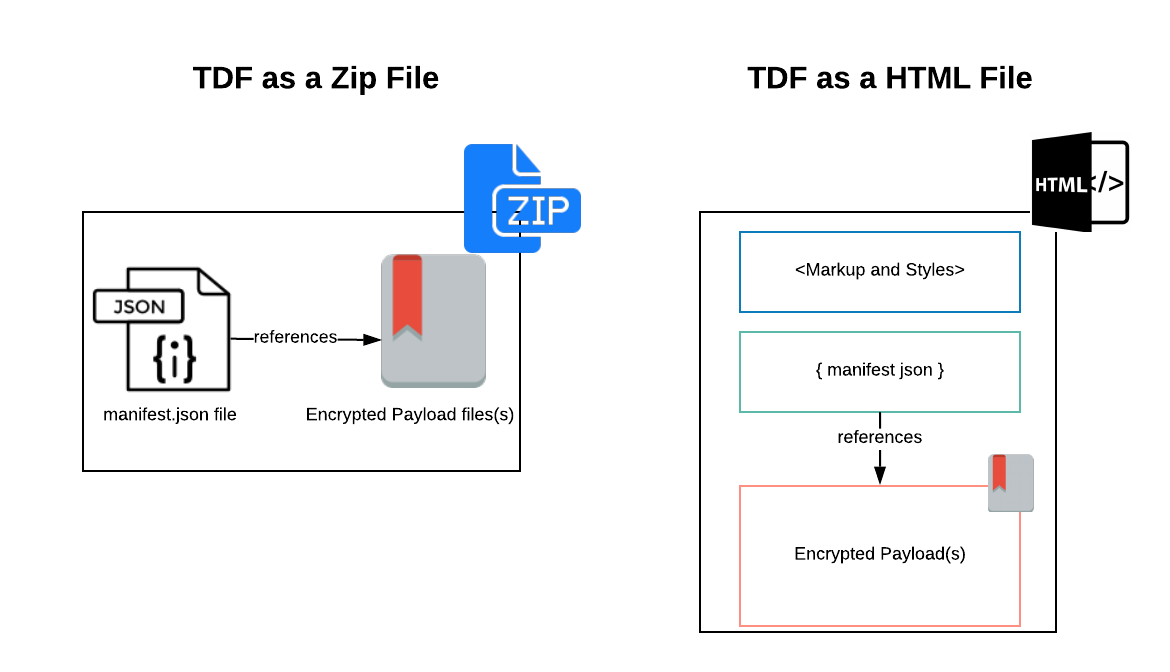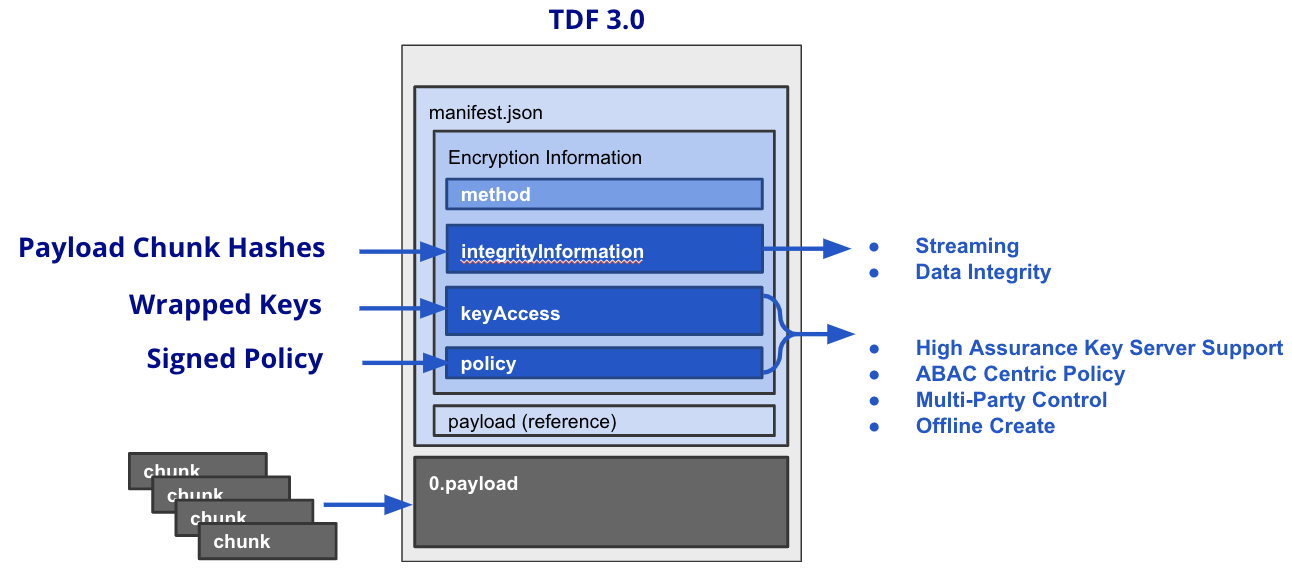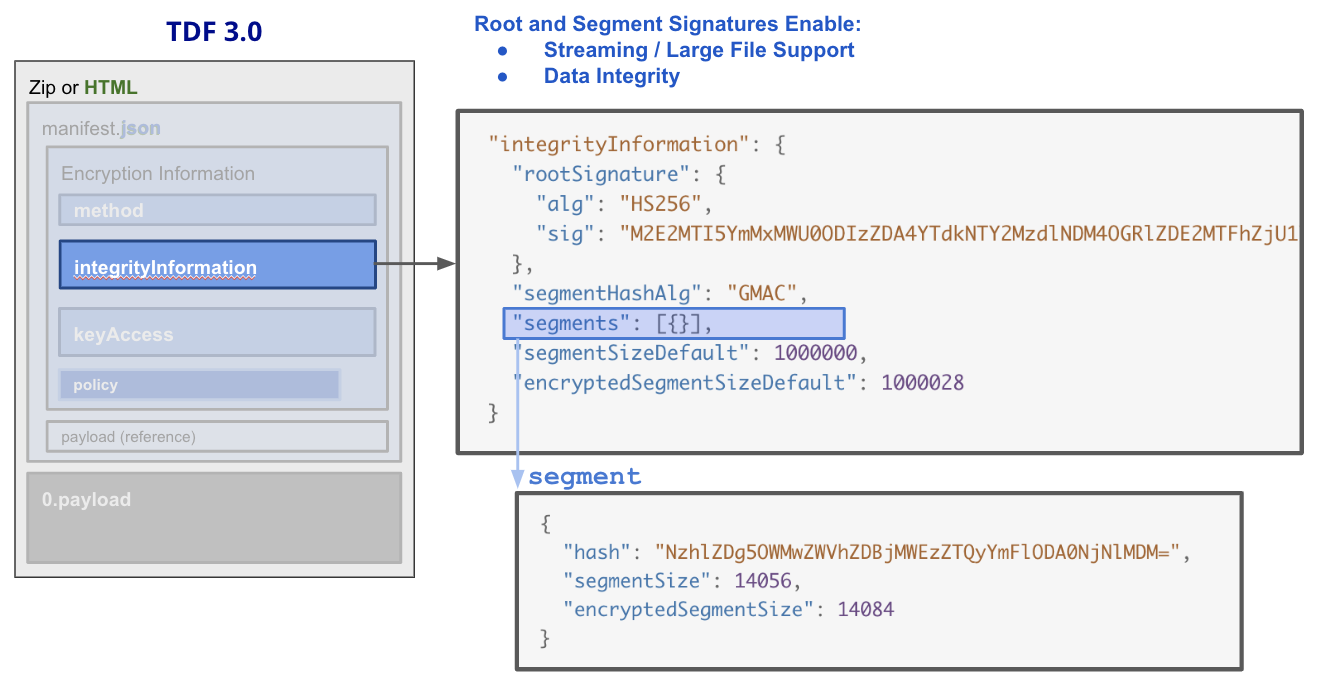Trusted Data Format (TDF) is an Open, Interoperable data format for implementing Data Centric Security for objects (such as files or emails). This repository specifies the protocols and schemas required for TDF operation. Versioning of this spec follows the Semver standard.
OpenTDF derives its modern JSON-encoded format from the TDF XML Specification. If you are interested in interoperability between OpenTDF and Base TDF XML or community-specific implementations, please contact us.
- Schema - Schema definitions for common TDF data objects.
- Protocol - High-level design of the TDF architecture and process workflows.
Please see the contribution guidelines for proposing changes and submitting feedback.
TDF supports strong encryption of the data as well as strong protections for the encryption keys.
TDF protocol supports ABAC. This allows TDF protocol to implement policy driven and highly scalable access control mechanism.
TDF allows the data owner (or org's administrator) to revoke or expire access to data, even after it has left your org's boundaries.
TDF protocol and infrastructure enables logging every key request - effectively adding the most reliable auditing and tracking of access requests.
TDF supports protection (encryption and decryption) of very large files. This is done by supporting streaming.
TDF format provides support for cryptographic binding between payload and metadata via public key-based signatures. This guarantees that the Policy Object has not been tampered with.
Thanks to the assurances provided by Policy Binding described above, TDF-enabled clients can create TDFs without actively connecting to the key server (in other words, no access to the internet). The offline created TDF can be sent to anyone via offline methods or when the device has access to internet again.
Multiple KAS servers, each hosted by a different organization, can jointly control access to a TDF file. This enables organizations to jointly own, control, audit files in a zero trust manner.
A TDF file at rest can be in one of the two forms:
- As a Zip file with extension of
.tdf. For example, if you are trying to protect a file nameddemo.jpeg, the file will be stored asdemo.jpeg.tdfafter encryption. - As a HTML file with extension of
.html. For example, if you are trying to protect a file nameddemo.jpeg, the file will be stored asdemo.jpeg.htmlafter encryption. An example HTML file is (here)[https://github.com/opentdf/spec/blob/master/schema/HtmlProtocolExample.html].
Irrespective of whether the TDF file is composed as a Zip or HTML, there are always two components in a TDF file:
- A
manifest.jsoncomponent. Themanifest.jsondata structure has all the information anyone would need to request access to decryption key. Be sure to check out the TDF3 Schemas for a detailed reference onmanifest.json - Encrypted Payload component. This is simply the encrypted version of the object (say a file or email) being protected.
TDF composed as Zip and HTML file.
There are three principle element types within a TDF's manifest.json component:
- Encryption Information: for encrypting, signing, or integrity binding of Payloads and Assertions
- Payload Reference(s): reference(s) to the encrypted payload
- Assertion(s): statement(s) about payload(s); this is optional and not shown below.
A TDF file with manifest.json component and encrypted payload component.
TDF's newest version, TDF3 adds powerful new features on top of existing capabilities. Below is a summary of what capabilities are unlocked by each new top level element within encryption information.
In order to support large file use cases, including streamability with high integrity, we added integrityInformation as an element to Encryption Information. Below is a look at what it looks like in TDF3 manifest.json file.
With embedding cryptographically bound policy and wrapped keys, we enable a high assurance key server.
Want to protect files such that two (or more) organizations control the keys? It is now possible with TDF3. keyAccess object in particular allows for array of objects, which can allow for multiple KAS servers to participate in an object key grant.



